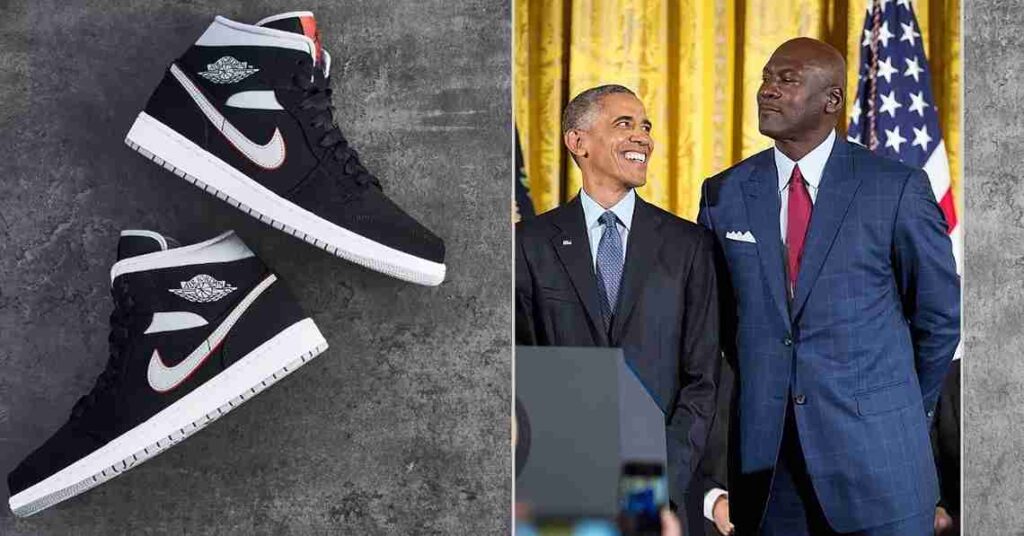Michael Jordan’s Air Jordan Deal: How He Revolutionized NBA Sponsorship
Michael Jordan’s partnership with Nike transformed basketball culture forever, paving the way for athletes to earn by partnering with global brands.

“Powerful,” “competitive,” “winner”; these adjectives did their best to describe who Michael Jordan was on the basketball court, but they all fell short.
Jordan busted onto the NBA scene in the mid-1980s, and not only did he change the game both on and off the hardwood, he also brought basketball to global attention. However, it was Michael Jordan’s partnership with Nike that turned heads and transformed basketball culture forever.
This deal paved the way for basketball players and athletes in other sports, reforming how they can amplify their earnings by partnering with global brands. Following his exploits in college basketball and his rookie year, it was written in the stars that the then-21-year-old was destined to bring the game to new heights.
The Risk And Vision: Nike’s Gamble
The early 1980s was a rough period for Nike as growth stalled, and a misjudged venture into clothing significantly impacted the company’s revenue, leaving it in the red.
Following the 1984 NBA Draft – during which the Chicago Bulls selected a young Michael Jordan as the third pick overall – Nike budgeted to reinvest more than half of its earmarked marketing budget (worth $250,000) into the NBA, and decided to try to sign three or four players from the 1984 draft to a shoe deal.
However, Nike’s basketball guru, Sonny Vaccaro, urged Nike CEO Phillip Knight to gamble the $250,000 basketball marketing budget entirely on Jordan. In an effort to beat out the competition against Converse and persuade Jordan to sign with them, Nike offered the future Hall of Famer a five-year deal worth $2.5 million in October – which was considered astronomical for a rookie at the time.
Jordan’s deal was inked in October 1984 for $2.5 million. In October 2023, the same contract would be worth $7,307,431.15 when accounting for inflation.
Nike inserted four clauses into the deal to protect themselves from losing the entire investment, in the event Jordan failed to live up to expectations. Jordan needed to be named to an All-Star or All-NBA team, win “Rookie of the Year,” average over 20 points per game, or sell over $4 million worth of Nike Air Jordans.
To fulfill his side of the bargain, Jordan was required to achieve just one of those stipulations – but the five-time MVP smashed all the requirements, and entered into a symbiotic relationship with the brand.
Nike officially released the Air Jordan 1 sneakers in April 1985 with a price tag of $64.
While Air Jordan 1 sneakers sold for $64 in April 1985, inflation strikes again. As of October 2023, the same sneakers would cost $184.27.
Although the NBA banned the shoe and fined Jordan $5,000 every time he stepped onto the court with the sneakers due to their color and design, it did little harm to their off-court business – as Nike leveraged the notoriety of the ban as an advantage.
Initials projections held that Nike would sell $3 million worth of Air Jordans at most – but the brand sold $70 million worth of Air Jordans within two months, and by the end of the year the Jordan brand made the company over $160 million, with Michael receiving a point for every pair sold.
Air Jordan Beyond the Court
The Air Jordan brand quickly became a cultural phenomenon. It was not just a shoe; it was a lifestyle.
People lined up for hours to get their hands on the latest release, and collectors would pay thousands of dollars for rare editions. During Michael Jordan’s playing career (1984 to 2003), Nike released a new Air Jordan sneaker every season.
The partnership redefined the endorsement format of brands, as they switched focus from teams to individuals. The shoe also skyrocketed Jordan’s marketability to heights that even players today cannot reach; “Be Like Mike” became an iconic slogan in the 1990s.
Jordan’s likeness crossed over to brands such as Hanes, Coca-Cola, Wheaties, Gatorade, and McDonald’s. Jordan’s impact on the game is still felt today; in 2021, a pair of sneakers won by Jordan in 1984 was auctioned for $1.47 million by collector Nick Fiorella.
In 1997, Jordan and Nike launched the Air Jordan Brand, his own subdivision of Nike that sponsors teams and athletes. Jordan reached billionaire status in 2014; the six-time NBA champion was paid $256 million from Nike in 2022 alone, which is more than double his entire NBA career earnings.
The Nike-Jordan partnership revolutionized athlete endorsements, and Jordan’s Air Jordan deal served as a blueprint for other athletes to make millions from sponsorships.
Credits: Uchenna Onyia / TheRichest






